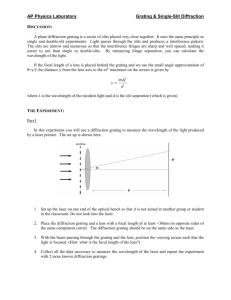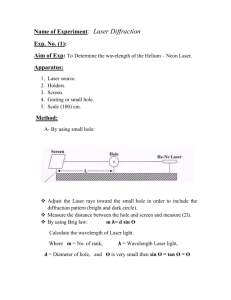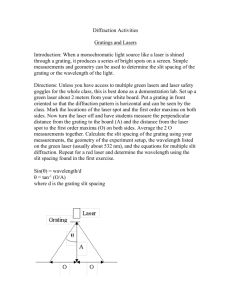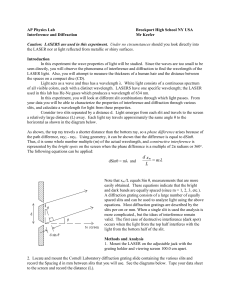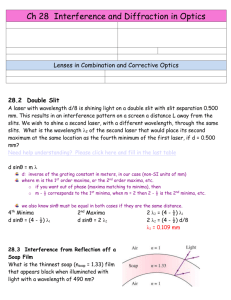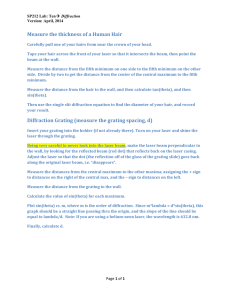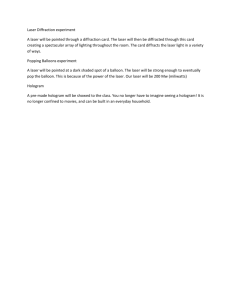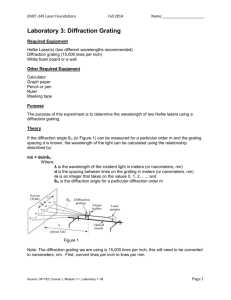File
advertisement
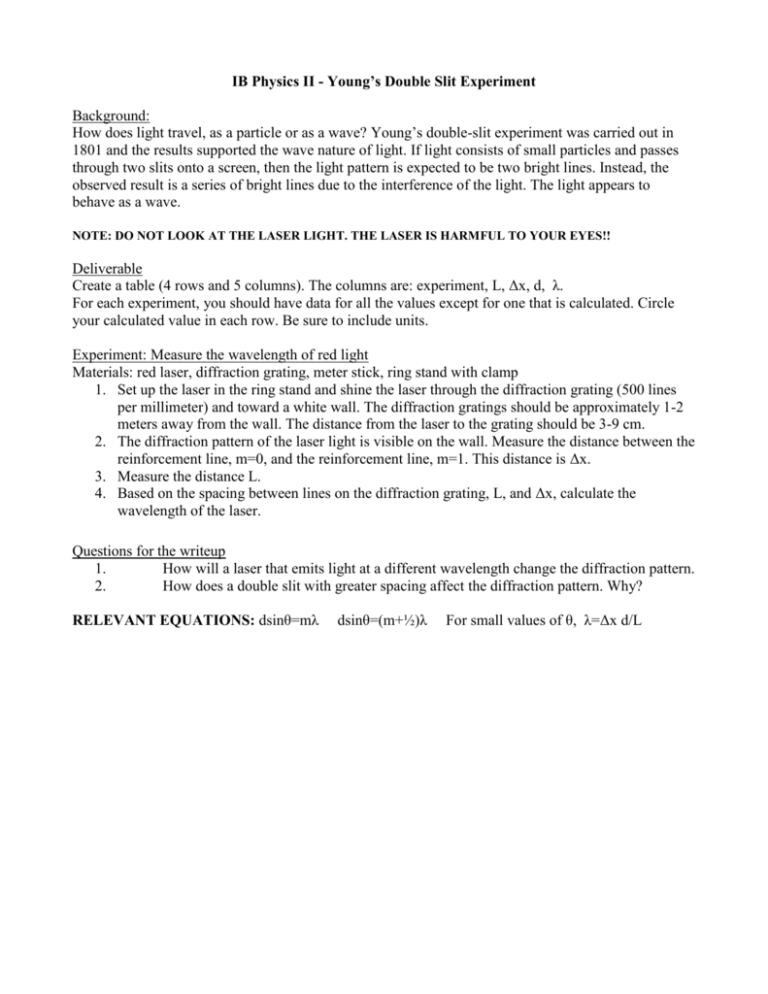
IB Physics II - Young’s Double Slit Experiment Background: How does light travel, as a particle or as a wave? Young’s double-slit experiment was carried out in 1801 and the results supported the wave nature of light. If light consists of small particles and passes through two slits onto a screen, then the light pattern is expected to be two bright lines. Instead, the observed result is a series of bright lines due to the interference of the light. The light appears to behave as a wave. NOTE: DO NOT LOOK AT THE LASER LIGHT. THE LASER IS HARMFUL TO YOUR EYES!! Deliverable Create a table (4 rows and 5 columns). The columns are: experiment, L, Δx, d, λ. For each experiment, you should have data for all the values except for one that is calculated. Circle your calculated value in each row. Be sure to include units. Experiment: Measure the wavelength of red light Materials: red laser, diffraction grating, meter stick, ring stand with clamp 1. Set up the laser in the ring stand and shine the laser through the diffraction grating (500 lines per millimeter) and toward a white wall. The diffraction gratings should be approximately 1-2 meters away from the wall. The distance from the laser to the grating should be 3-9 cm. 2. The diffraction pattern of the laser light is visible on the wall. Measure the distance between the reinforcement line, m=0, and the reinforcement line, m=1. This distance is Δx. 3. Measure the distance L. 4. Based on the spacing between lines on the diffraction grating, L, and Δx, calculate the wavelength of the laser. Questions for the writeup 1. How will a laser that emits light at a different wavelength change the diffraction pattern. 2. How does a double slit with greater spacing affect the diffraction pattern. Why? RELEVANT EQUATIONS: dsinθ=mλ dsinθ=(m+½)λ For small values of θ, λ=Δx d/L

